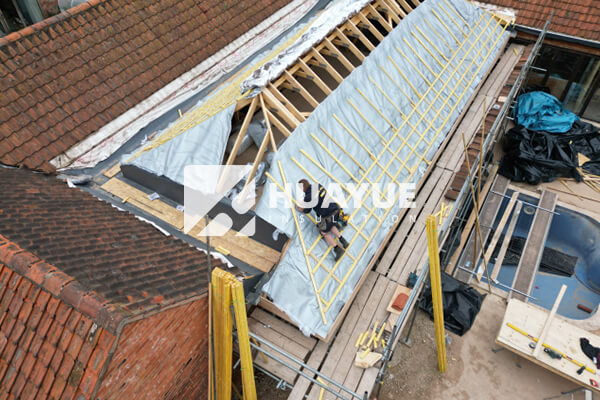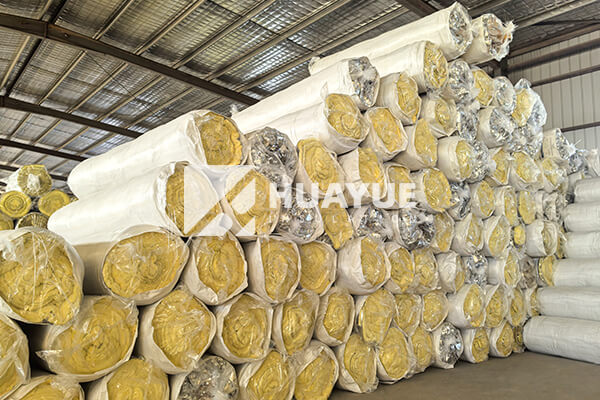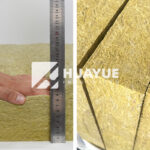Metal Building Fiberglass Insulation: Is It the Right Choice for Your Project?
Keeping a metal building warm in winter and cool in summer is a challenge. Many owners struggle with condensation, high energy bills, and uncomfortable indoor temperatures.
Fiberglass insulation is widely used in metal buildings because it is affordable, flexible, and effective at managing heat and sound loss. It helps stop condensation, cuts energy costs, and creates a more comfortable space.

Metal buildings often sweat when outside temperatures change quickly. This leads to dripping ceilings, rust, and mold. With fiberglass insulation, you can solve these issues and make the space more usable. I have seen firsthand how the right insulation can extend the life of a building and lower total costs. Let’s look at how fiberglass insulation works for metal structures and what you need to know.
Can you use fiberglass insulation in a metal building?
Fiberglass insulation can be used in metal buildings to reduce heat loss, manage moisture, and lower noise. It is available in rolls and batts, making installation easy between steel framing and wall panels.
Yes, you can safely and effectively use fiberglass insulation in metal buildings. It prevents condensation, dampens sound, and makes the space more comfortable for work or storage.

When I started working with metal building owners, most wanted a simple, cost-effective way to improve comfort. Fiberglass insulation stood out because it can be installed before or after the building is finished. The most common method uses rolls or batts fitted between wall and roof panels. Facing materials, such as vinyl or aluminum, often cover the insulation to protect against moisture and damage. Sometimes contractors use vapor barriers for extra moisture control. Fiberglass is lightweight and cuts easily around windows, doors, and structural beams. Here’s a simple table explaining how fiberglass compares to other choices:
| Property | Fiberglass | Spray Foam | Rock Wool |
|---|---|---|---|
| Installation | Easy (DIY) | Professional | DIY/Premium |
| R-value per inch | 2.9-3.8 | 6-7 | 3-4 |
| Cost | Low | High | Medium-High |
| Moisture Resistance | Moderate* | Excellent | Excellent |
| Fire Resistance | Good | Good | Best |
*Must be paired with a vapor barrier for best results.
What is the best insulation for metal buildings?
The best insulation for a metal building depends on climate, budget, and building use. Fiberglass is the most common choice for low cost and easy installation. Spray foam and rock wool work better for extreme temperatures or moisture.
There is no single best insulation for all metal buildings. Fiberglass is popular for most people, but climate and needs may make spray foam or rock wool a better fit.

I always ask customers about local weather, noise levels, and how they use the space. Fiberglass works well in moderate climates and is easy to install, even without special tools. In damp or coastal areas, I recommend adding a vapor barrier or using closed-cell spray foam instead. While spray foam has a higher R-value, it costs much more and requires professional installation. Rock wool is a premium choice for fire resistance and soundproofing, but not everyone wants to pay extra. Here is a breakdown:
Comparison of Metal Building Insulation Options
| Insulation Type | Strengths | Weaknesses | Best Use Case |
|---|---|---|---|
| Fiberglass | Cheap, flexible, easy to fit | Needs vapor barrier, compresses | Workshops, barns, garages |
| Spray Foam | High R-value, moisture proof | Expensive, needs pros | Cold storage, humid areas |
| Rock Wool | Fire/sound resistant, durable | Price, weight | Commercial, fire-prone areas |
For most metal buildings up to 4,000 square feet, fiberglass offers a simple balance of price, performance, and availability.
How much to insulate a 20×30 metal building?
To insulate a 20×30 metal building with fiberglass, costs average $1.00–$1.50 per square foot installed, totaling around $600–$900 for materials and labor, depending on R-value and finish.
You will likely spend between $600 and $900 for fiberglass insulation in a 20×30 metal building, not including special finishes or high R-values.
Insulating a small shop or garage saves energy and helps protect tools, vehicles, or supplies. In my experience, I advise budgeting for vapor barriers and facing materials, especially if you plan to heat or cool the space. Standard fiberglass batts or rolls are usually R-13 to R-19 for walls and R-19 to R-30 for ceilings. Installation is simpler before the building is assembled, but it can also be done in a retrofit. Below is a sample cost table:
20×30 Metal Building Insulation Cost Estimate
| Item | Area (sq ft) | Unit Cost ($) | Subtotal ($) |
|---|---|---|---|
| Walls + Ceiling Coverage | 1,500 | 1.00 | 1,500 |
| Bulk Discount/DIY Savings | – | –0.50 | –750 |
| Total (Typical Install) | – | – | 750 |
Costs can go up for taller ceilings, double layers, premium facings, or difficult layouts.
What is a disadvantage of fiberglass insulation?
Fiberglass insulation can trap moisture, sag, or lose effectiveness over time. It may not prevent air leaks if installed poorly. Handling requires gloves and a mask for skin and lung protection.
The biggest drawback of fiberglass insulation is moisture absorption, which can lead to mold or corrosion if not paired with a vapor barrier.
I always warn customers that installing fiberglass without a vapor barrier in a metal building is risky. When insulation gets wet, its R-value drops and can cause rust or CUI under roof and wall panels. In older buildings, I have seen times when insulation sagged or settled, leaving gaps and cold spots. Also, during installation, tiny glass fibers can irritate skin and lungs, so it’s important to take safety measures. Here is an easy reference table for fiberglass pros and cons:
Fiberglass Insulation: Pros and Cons
| Pros | Cons |
|---|---|
| Low cost | Moisture can reduce performance |
| Easy to install | Needs careful handling/safety equipment |
| Readily available | Can settle or compress over time |
| Good sound absorption | Not a perfect air seal |
For long-term performance, always use a vapor barrier and inspect insulation regularly for signs of mold or damage.
Conclusion
Fiberglass insulation is a cost-effective and reliable option for metal buildings, if installed correctly with moisture control. Choose the right insulation to match your climate, needs, and budget.
You may also be interested in:
Ready to Get Started?
Get in touch with our experts for personalized solutions tailored to your needs.
Get Free QuoteLatest Articles


What Does Density Mean for Rock Wool Insulation?
Nov 25, 2025

Does mold grow on fiberglass insulation?
Nov 25, 2025
Let's Work Together
Ready to take your business to the next level? Get in touch with our team of experts and let's discuss how we can help you achieve your goals.
Get Free Solutions




